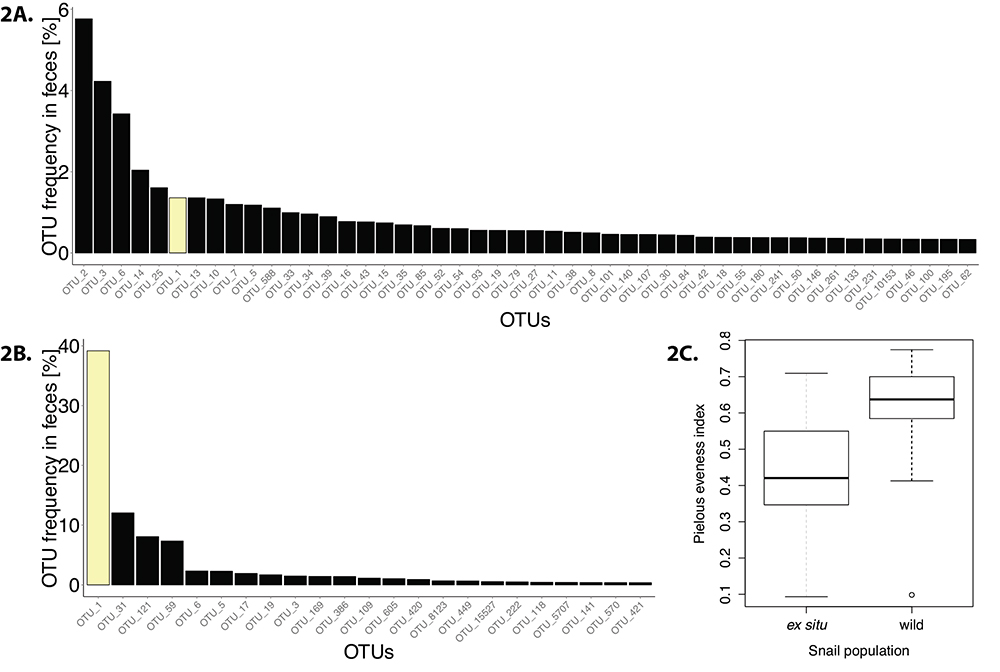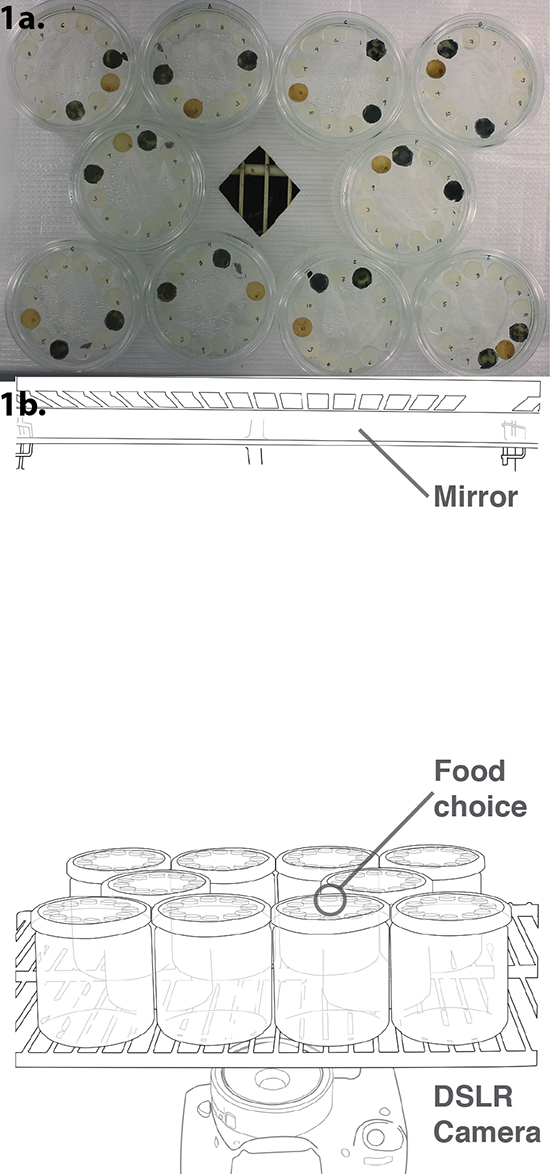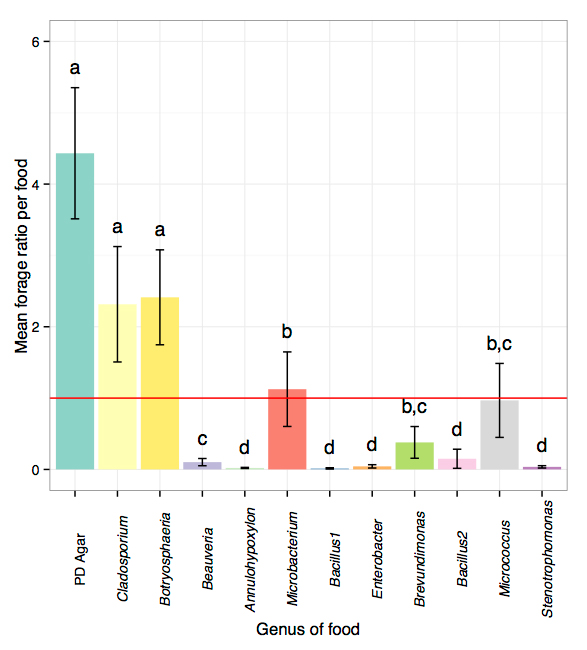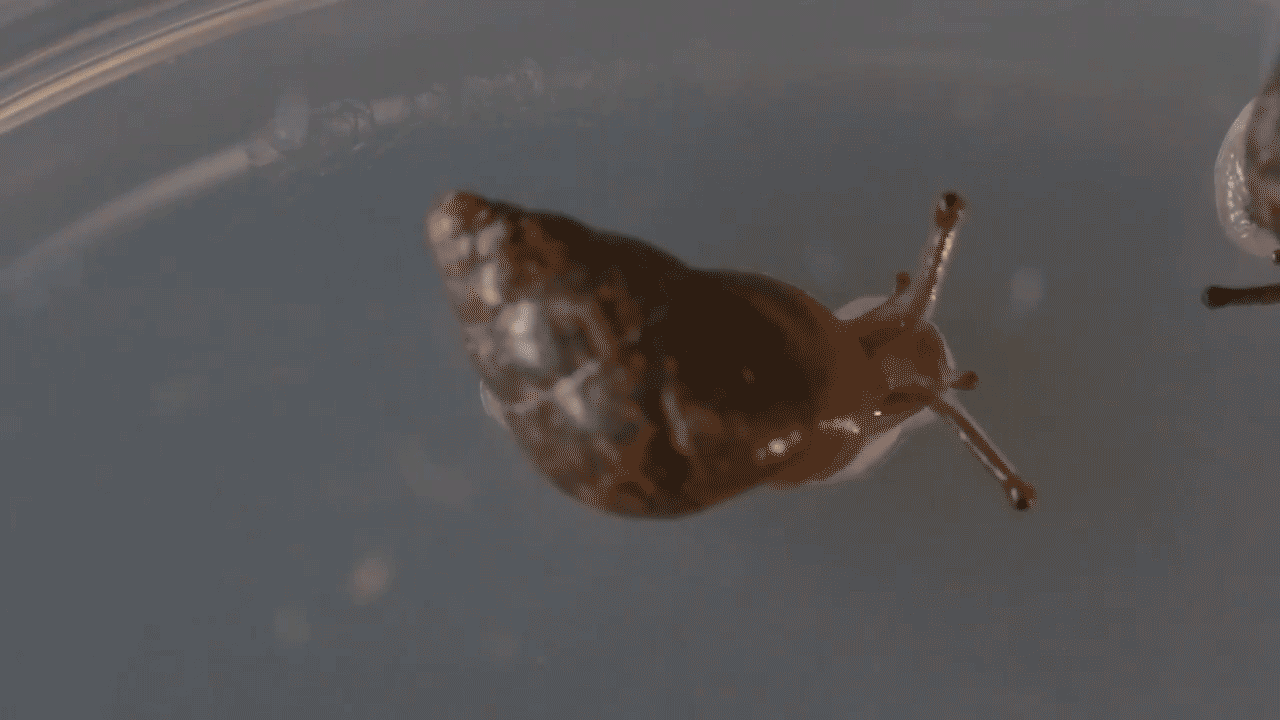| Home | Phyllosoma | Phyllosphere | Jellies | Molecular Methods | Publications |
|---|
Culturing endangered animals
1. Noninvasive sequencing of remnant food DNA from snail poop
Rapid extinction recently reduced the Achatinella genus of tree snails from approximately 41 species to just 10 species. The last lonely individual of the species Achatinella apexfulva has recently died and there are less than ten known individuals of A. fulgens in the wild. To minimize the risk of extinction of surviving species an ex situ breeding facility, the Hawaiian Tree Snail Conservation Laboratory, has maintained subpopulations of the snails since the late nineteen-eighties. However, despite the absence of predators these ex situ populations have not flourished. Managers are anxious to improve lab conservation strategies, because wild stocks of these unique animals are quickly declining. We used non-invasive methods and surrogate species to explore how the ex situ diet of these critically endangered species differs from their wild diet and could be enhanced.
Staff at the ex situ culture facility make frequent expeditions into the forest to collect bags of native foliage from which the captive snails can graze epiphytic fungi. The diet of captive snails is also supplemented with a monoculture of the fungus Cladosporium , which is provided to snails on disks of nutrient agar. We sequenced the DNA in the snails' feces to determine if the Cladosporium fungus that is used to supplement the diet of captive snails is a large component of their diet. It turned out that this isn’t really a “supplemental” diet, but instead dominates the diet (~38%). Cladosporium is a large component of the snail’s wild diet, but by “large” I mean it makes up ~1.5% of the fungus detected in the guts of the snail, so considerably less than 38%.

Studies had been conducted with snails where they were given the option of eating a fungal species or not, i.e. “single choice” experiments. These experiments determined that snails eat almost any fungus. Our eDNA studies also indicated that snails might indiscriminately consume any fungus available on their host tree.
2. Using a surrogate species for lab scale dietary research

We wanted to use a controlled experiment to test if snails have food preferences. We didn’t use the federally endangered Achatinella snails for this, but substituted a species of tree snail in the same subfamily as them, an Auriculella. We were reluctant to use any critically endangered species because the controlled experiment involved putting multiple snails in little glass enclosures and filming them over 24 hours.

Our controlled experiment offered the snails a choice of eleven fungal and bacterial species that Kapono Gaughen and I had isolated from the snails’ habitat and grown on lawns of potato dextrose agar (typically called PDA). PDA is commonly used in fungal culture, and it is simply agar mixed with a sugar (dextrose) and potato starch. The Cladosporium fed to snails in the captive breeding program is given to them on PDA. We included a plug of PDA in our experiment as a control. My thinking was that snails would probably choose any microbial food at random, the PDA would be a control just to make sure that the snails were visiting the food choices for the food and not because, for example, the soft damp PDA creates a more attractive environment for the snails than the cold hard glass they must travel across to get to any food. To our surprise the PDA, which was meant to be a negative control, was by far the most preferred item in the experiment! Further observations confirmed that the snails are actually eating the PDA. This is a bit of a concern, as the natural habitat of the snails is not rich in nutrients and calories, so the PDA is by comparison a western-styled “junk” food of sugar and potato carbohydrate. As an alternative to provisioning captive snails with fungi grown on PDA, Kapono and I confirmed that Cladosporium can be grown in a liquid broth, collected in a sieve, and the excess of carbohydrate rinsed off, which might be a better way of delivering supplemental microbial cultures to tree snails.

Read the Publication
| Home | Phyllosoma | Phyllosphere | Jellies | Molecular Methods | Publications |
|---|